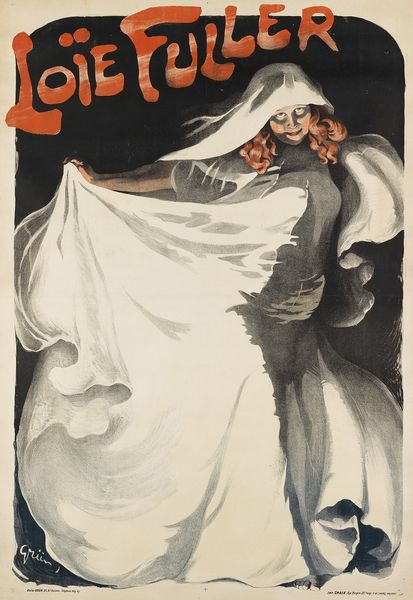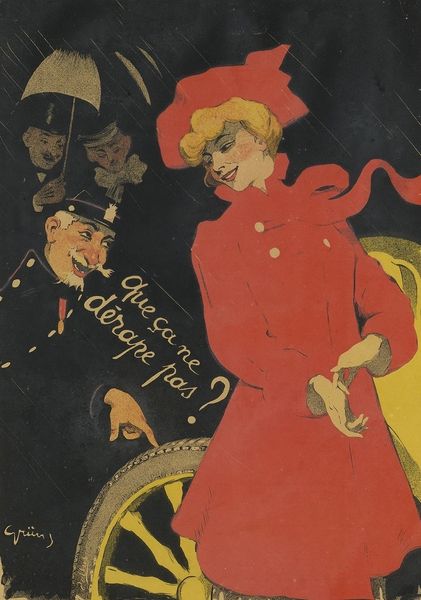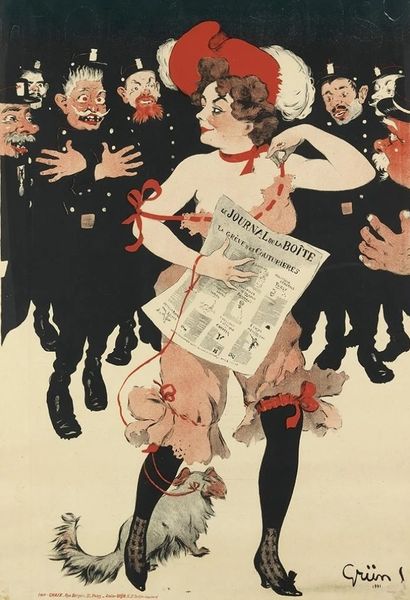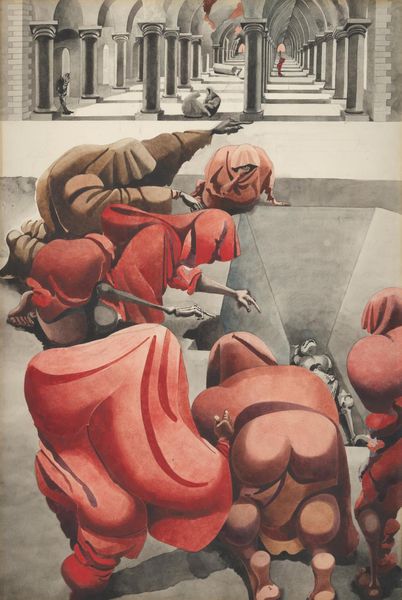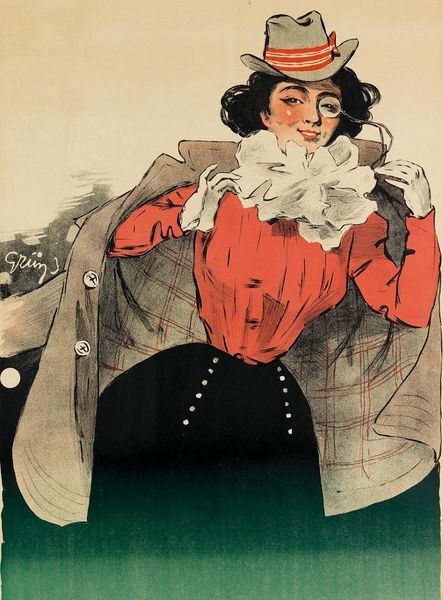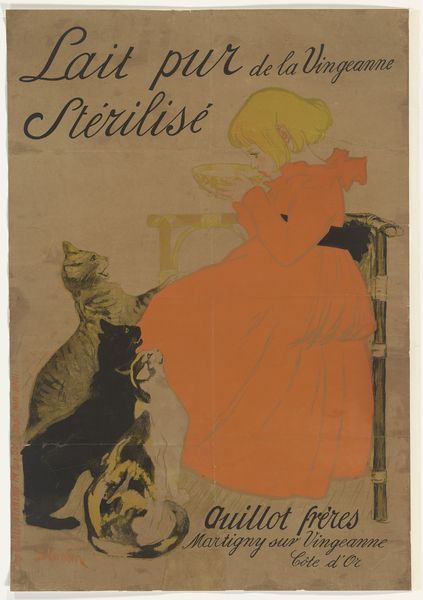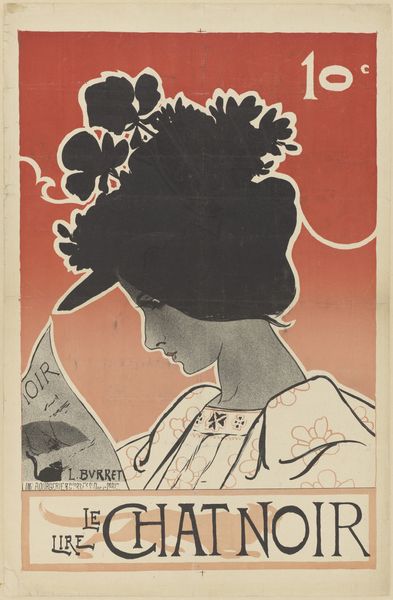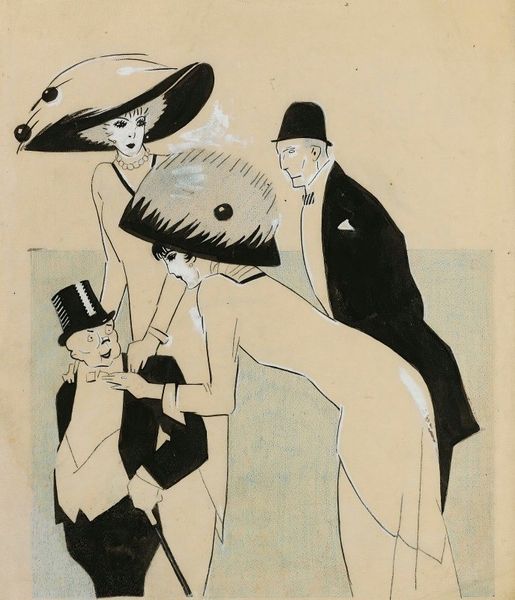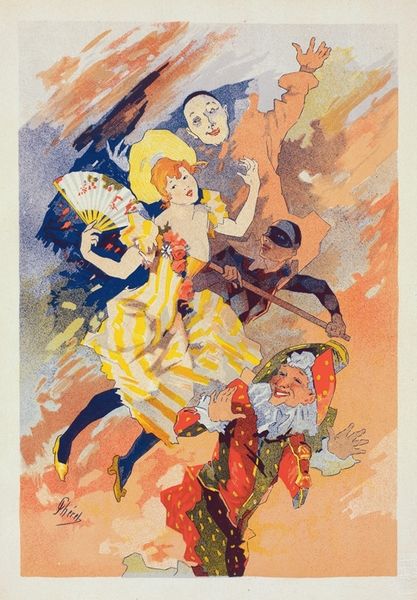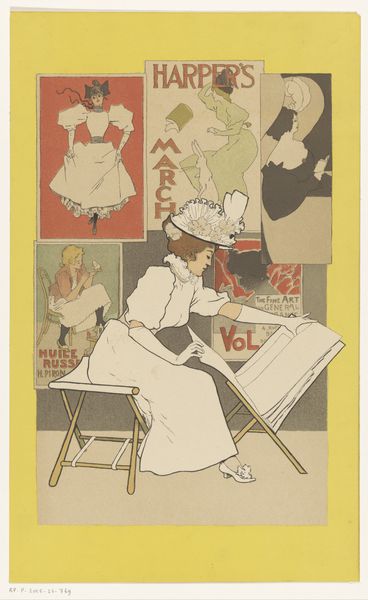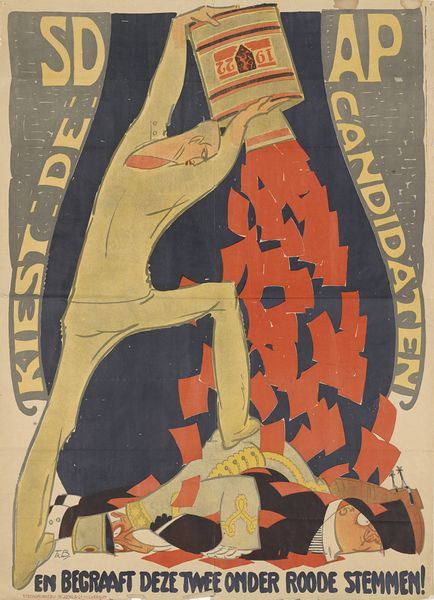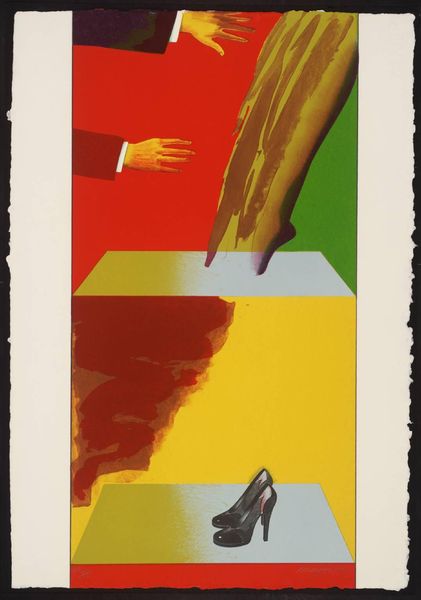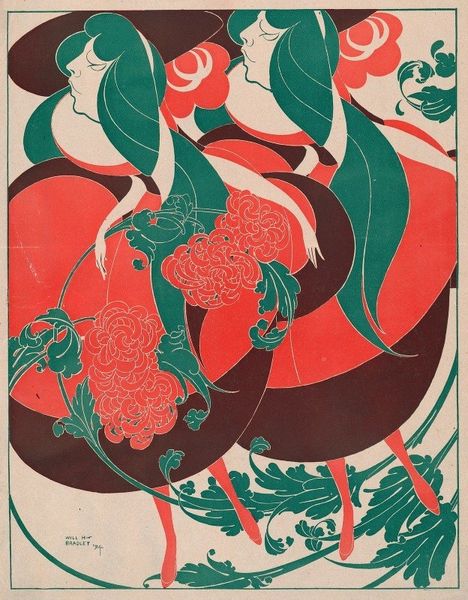
graphic-art, lithograph, print, poster
#
graphic-art
#
art-nouveau
#
lithograph
# print
#
caricature
#
caricature
#
pop art
#
figuration
#
poster
Copyright: Public domain
Curator: This "Untitled" lithograph poster by Jules-Alexandre Grun certainly captures the energy of the Art Nouveau period. The fluid lines, vibrant colors— Editor: It also presents a vision of Belle Époque Paris that is, at best, questionable. Look at these caricatures. Who do they represent? Curator: The figures serve to frame the central figure, a woman in a dynamic pose. The composition, the swirling fabric of her dress mirroring the text... it's all very carefully considered. Editor: Carefully considered to reinforce racist tropes, and class divisions! This isn’t just a depiction of the Ball Tabarin; it's a statement about who is welcome, and on what terms. Look at the way they’re all clustered so closely together; is this how the artist truly feels about the Black individuals within the community? And this privileged figure in red dominating the entire scene. Curator: One could argue the red directs the viewer’s eye, highlighting the dynamism of the performance being advertised, drawing you down and into the text below... Editor: And away from critical thinking? Grun's visual language speaks volumes, often reinforcing social hierarchies. It’s vital to confront the uncomfortable truths embedded within this seeming exuberance. How do you respond to the figures? Their positioning? Their expressions? We, the audience, should examine what the artist includes, as well as what they exclude. Curator: While the work has historical value in its semiotic display of societal hierarchies of the time, I find the overt message deeply unsettling. It compels one to consider not only the aesthetic, but also the ethical dimension of visual representation and design in the 1800s and today. Editor: Precisely! As cultural workers, we must reflect upon the impact these historical constructions still have.
Comments
No comments
Be the first to comment and join the conversation on the ultimate creative platform.
